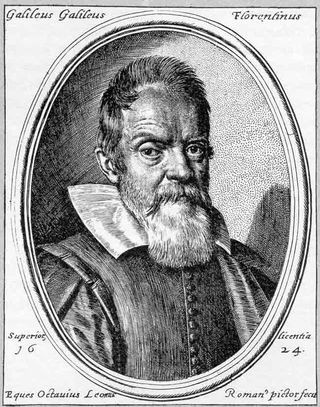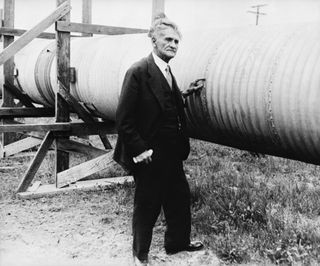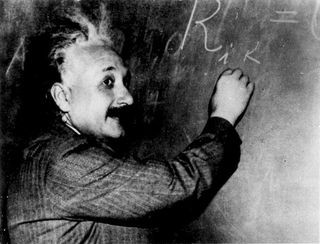Light Travels Speed at an astonishing rate, shaping our understanding of the universe. Are you planning a trip to Vietnam? Let SIXT.VN take care of all your travel needs while you ponder the mysteries of the cosmos. With our reliable airport transfer, hotel booking, and tour services, your journey will be as smooth as light itself, and you can explore the beauty of Hanoi and beyond.
1. Understanding the Basics: What is Light Travels Speed?
Light travels speed at a constant rate of 299,792,458 meters per second (approximately 186,282 miles per second) in a vacuum. Known as “c” in physics, it’s a fundamental constant influencing how we perceive time, distance, and the universe’s very fabric.
- Definition: Light travels speed is the pace at which photons, the elementary particles of light, propagate through space.
- Importance: This speed acts as a universal speed limit, crucial for understanding special relativity and the cosmos’s behavior.
According to Albert Einstein’s theory of special relativity, no matter can exceed the light travels speed. This concept has profound implications for space travel, our comprehension of the universe, and the definition of standard measurements.
 Abstract, futuristic image of blue light streaks radiating outward, giving the impression of rapid movement or traveling at high speed, inspired by the concept of faster-than-light travel
Abstract, futuristic image of blue light streaks radiating outward, giving the impression of rapid movement or traveling at high speed, inspired by the concept of faster-than-light travel
1.1 How is the Light Travels Speed Defined?
The light travels speed is defined as 299,792,458 meters per second in a vacuum. It is a fundamental constant used to define measurements such as the meter and the Kelvin, according to the U.S. National Institute of Standards and Technology.
1.2 Why is Light Travels Speed Important?
Light travels speed is critical because it serves as the universe’s ultimate speed limit. According to Einstein’s theory of special relativity, nothing can travel faster than light. This principle is fundamental to our understanding of space, time, and the behavior of the universe.
2. The Light-Year: Measuring the Immense
A light-year represents the distance light traverses in a single year, roughly 6 trillion miles (10 trillion kilometers). It’s a yardstick for measuring vast cosmic distances.
- Concept: This unit simplifies the immense scales of the universe, helping astronomers and physicists quantify distances between stars and galaxies.
- Examples: The Moon is about 1 light-second away, while the Sun is approximately 8 light-minutes away. Alpha Centauri, the nearest star system, is about 4.3 light-years away.
Understanding light-years allows us to appreciate the vastness of space and the time it takes for light from distant objects to reach us.
2.1 How Far is One Light-Year?
One light-year is approximately 6 trillion miles (10 trillion kilometers). NASA’s Glenn Research Center explains that visualizing this distance requires imagining 31.6 million lines, each the circumference of the Earth, laid end to end.
2.2 Why Use Light-Years for Measuring Space?
Light-years are used to measure immense distances in space because they provide a practical unit for expressing the vast separations between stars and galaxies. Using miles or kilometers would result in numbers too large to manage easily.
3. Perspectives from an Expert: Rob Zellem on Light Travels Speed
Rob Zellem, a NASA scientist specializing in exoplanets, answers frequently asked questions about the light travels speed, offering valuable insights.
- Faster than Light? Nothing! The light travels speed is the universe’s speed limit.
- Constant Speed? The light travels speed is constant in a vacuum but slows down when passing through mediums like water or glass.
- Discovery: Ole Rømer made one of the first measurements in 1676 by observing Jupiter’s moons.
Zellem’s expertise helps clarify common misconceptions and provides a deeper understanding of the light travels speed.
3.3 Is the Light Travels Speed Consistent?
The light travels speed is constant in a vacuum, but it slows down when passing through different mediums. For example, it travels at about 225,000 kilometers per second in water and 200,000 kilometers per second in glass.
3.4 Who First Measured the Light Travels Speed?
Ole Rømer was one of the first to measure the light travels speed in 1676. He observed the eclipses of Jupiter’s moon Io and noticed variations depending on Earth’s distance from Jupiter.
4. Historical Attempts to Measure Light Travels Speed
Throughout history, numerous scientists and philosophers have pondered and attempted to measure the light travels speed.
- Early Ideas: Greek philosophers like Empedocles and Aristotle debated whether light had a travel rate.
- Galileo’s Experiment: Galileo attempted to measure it with lanterns but found the distance too short.
- Rømer’s Breakthrough: Ole Rømer estimated it by observing eclipses of Jupiter’s moon Io.
- Later Experiments: James Bradley, Hippolyte Fizeau, and Albert Michelson refined measurements over the centuries.
These historical efforts showcase the evolution of our understanding and measurement of the light travels speed.
 Galileo Galilei is credited with discovering the first four moons of Jupiter.
Galileo Galilei is credited with discovering the first four moons of Jupiter.
4.1 What Were Some Early Theories About Light Travels Speed?
Early Greek philosophers like Empedocles believed light had a travel rate, while Aristotle thought it was instantaneous. It took centuries to develop methods accurate enough to measure the light travels speed.
4.2 How Did Ole Rømer Measure the Light Travels Speed?
Ole Rømer measured the light travels speed by observing the eclipses of Jupiter’s moon Io. He noticed the eclipses appeared to lag when Earth and Jupiter were moving away from each other, leading him to conclude that light took time to travel the distance.
5. Albert Michelson’s Contributions
Albert A. Michelson made significant contributions to measuring the light travels speed with increasing precision.
- Early Measurement: In 1879, Michelson measured the light travels speed at 186,355 miles per second (299,910 km/s).
- Later Experiments: He refined measurements using mountain tops and a mile-long vacuum tube.
- Michelson-Morley Experiment: This experiment aimed to detect the luminiferous aether, but its failure led to the understanding that light travels through a vacuum.
Michelson’s work advanced our understanding of light and laid the groundwork for modern physics.
 Dr. Albert A. Michelson stands next to a large tube supported by wooden beams.
Dr. Albert A. Michelson stands next to a large tube supported by wooden beams.
5.1 What Was the Michelson-Morley Experiment?
The Michelson-Morley experiment aimed to detect the luminiferous aether, a hypothetical medium through which light was thought to travel. The experiment’s failure led to the conclusion that light does not need a medium and can travel through a vacuum.
5.2 How Did Michelson Improve Measurements of the Light Travels Speed?
Michelson improved measurements of the light travels speed by increasing the distance between mirrors and using high-quality mirrors and lenses. He also conducted experiments using a mile-long vacuum tube to eliminate the effects of air.
6. Special Relativity and Light Travels Speed
Einstein’s theory of special relativity ties energy, matter, and the light travels speed together in the famous equation E = mc².
- E = mc²: This equation shows that small amounts of mass contain immense energy.
- Constant Speed: The light travels speed is an immutable constant, independent of the observer’s speed.
- Speed Limit: Objects with mass cannot reach the light travels speed as their mass would become infinite.
Special relativity revolutionized our understanding of physics and the universe’s fundamental laws.
 Albert Einstein writing on a blackboard.
Albert Einstein writing on a blackboard.
6.1 How Does E = mc² Relate to the Light Travels Speed?
The equation E = mc² relates energy (E), mass (m), and the light travels speed (c). It shows that energy equals mass times the light travels speed squared, demonstrating the relationship between mass and energy.
6.2 Why is the Light Travels Speed a “Speed Limit”?
The light travels speed is considered a “speed limit” because, according to special relativity, an object’s mass would become infinite if it reached the light travels speed. This would require infinite energy, making it impossible.
7. What Can Exceed Light Travels Speed?
While nothing can travel faster than light within the universe, the expansion of the universe itself exceeds the light travels speed.
- Universe Expansion: The universe expands at over 42 miles (68 kilometers) per second for each megaparsec of distance.
- General Relativity: Einstein’s theory of general relativity allows this behavior at vast distances.
This phenomenon doesn’t violate special relativity because it applies to the expansion of space itself rather than objects moving through space.
7.1 How Does the Universe Expand Faster Than Light?
The universe expands at a rate where the speed increases with distance. At extreme distances, this expansion rate exceeds the light travels speed, a concept allowed by general relativity but not special relativity.
7.2 Why Doesn’t Universe Expansion Violate Special Relativity?
Universe expansion does not violate special relativity because it is the expansion of space itself, not the movement of objects through space. Special relativity governs the speed limit within a local region of spacetime.
8. Does Light Ever Slow Down?
Light slows down when traveling through materials, though in a vacuum, it maintains a constant speed.
- Refractive Index: Materials slow light due to their refractive index.
- Examples: Light slows in Earth’s atmosphere, diamond, and ultra-cold clouds of atoms.
- Trapping Light: Researchers have even stopped light in exceptional points where light emissions intersect.
Understanding how materials affect light speed has implications for various scientific and technological applications.
 A sparkling diamond amongst dark coal-like rock.
A sparkling diamond amongst dark coal-like rock.
8.1 How Does Material Affect Light Travels Speed?
Materials affect the light travels speed because they have a refractive index that causes light to bend and slow down when it comes into contact with particles. The denser the material, the slower light travels through it.
8.2 Can Light Be Stopped?
Yes, light can be stopped. Researchers have trapped and stopped light inside ultra-cold clouds of atoms and at exceptional points where light emissions intersect and merge.
9. The Quest for Faster-Than-Light Travel
Science fiction often features faster-than-light travel, but it requires exotic physics to be possible.
- Warp Speed: The concept involves moving space around a spaceship rather than the ship itself moving.
- Folding Space: Some theories propose folding a space-time bubble around a vessel.
- Challenges: Overcoming the limitations of special relativity remains a significant hurdle.
Despite the challenges, the allure of interstellar travel continues to drive research and theoretical exploration.
9.1 What is Warp Speed?
Warp speed is a concept in science fiction where spaceships travel faster than light by warping or manipulating space around them. This would allow them to bypass the limitations imposed by special relativity.
9.2 How Could Faster-Than-Light Travel Be Achieved?
Faster-than-light travel might be achieved by manipulating space around a spacecraft, such as folding space-time or creating a warp bubble. These concepts require theoretical physics and technologies not yet available.
10. Light Travels Speed and Travel Services with SIXT.VN
While faster-than-light travel remains in the realm of science fiction, you can still travel efficiently and comfortably with SIXT.VN in Vietnam.
- Airport Transfer: Ensure a smooth arrival with reliable airport transfer services.
- Hotel Booking: Find the perfect accommodation with our extensive hotel options.
- Tour Services: Explore Vietnam with expertly guided tours.
- Flight Booking: Book your flights conveniently and at the best prices.
With SIXT.VN, your journey in Vietnam will be seamless, allowing you to focus on enjoying your experience.
10.1 How Can SIXT.VN Enhance Your Travel Experience in Vietnam?
SIXT.VN enhances your travel experience in Vietnam by providing convenient and reliable services such as airport transfers, hotel bookings, tour services, and flight bookings. This ensures a smooth and enjoyable trip.
10.2 What Services Does SIXT.VN Offer for Tourists in Vietnam?
SIXT.VN offers a range of services for tourists in Vietnam, including:
- Airport transfers
- Hotel booking
- Tour services
- Flight booking
- Car rentals
11. Exploring Hanoi with SIXT.VN
Hanoi, the capital of Vietnam, is a vibrant city full of history, culture, and delicious cuisine. With SIXT.VN, exploring Hanoi becomes effortless.
- Historical Sites: Visit iconic landmarks like the Ho Chi Minh Mausoleum and the Temple of Literature.
- Cultural Experiences: Enjoy traditional water puppet shows and explore the Old Quarter.
- Culinary Delights: Savor local dishes such as pho and banh mi.
- Convenient Transportation: Use SIXT.VN for easy and reliable transportation around the city.
Hanoi offers a unique blend of old and new, making it a must-visit destination.
11.1 What Are Some Must-See Attractions in Hanoi?
Some must-see attractions in Hanoi include:
- Ho Chi Minh Mausoleum
- Temple of Literature
- Old Quarter
- Hoan Kiem Lake
- Water Puppet Theatre
11.2 How Can SIXT.VN Help You Navigate Hanoi?
SIXT.VN helps you navigate Hanoi by providing reliable transportation services, including airport transfers and car rentals. This allows you to explore the city at your own pace and convenience.
12. Planning Your Trip to Vietnam with SIXT.VN
Planning a trip to Vietnam can be exciting and stress-free with SIXT.VN.
- Customized Itineraries: Tailor your travel plans to suit your interests and time.
- Reliable Services: Enjoy dependable transportation, accommodation, and tour options.
- Expert Support: Benefit from expert travel advice and assistance.
- Convenient Booking: Easily book your travel services online.
SIXT.VN ensures a seamless and enjoyable travel experience in Vietnam.
12.1 What Information Should You Gather Before Visiting Vietnam?
Before visiting Vietnam, gather information about:
- Visa requirements
- Local customs and etiquette
- Weather conditions
- Currency and exchange rates
- Health and safety precautions
12.2 How Does SIXT.VN Provide Travel Advice and Assistance?
SIXT.VN provides travel advice and assistance through its expert team of travel consultants. They can help you plan your itinerary, book accommodations, and provide useful tips for your trip.
13. Understanding Vietnamese Culture and Etiquette
To make the most of your trip to Vietnam, it’s essential to understand and respect local culture and etiquette.
- Greetings: Use polite greetings and show respect to elders.
- Dress Code: Dress modestly when visiting religious sites.
- Dining: Be mindful of dining customs and etiquette.
- Tipping: Tipping is not always expected but appreciated.
Respecting local customs enhances your travel experience and fosters positive interactions with locals.
13.1 What Are Some Important Customs to Observe in Vietnam?
Some important customs to observe in Vietnam include:
- Showing respect to elders
- Dressing modestly in religious sites
- Removing shoes when entering homes
- Using both hands when giving or receiving items
13.2 What Should You Know About Tipping in Vietnam?
Tipping is not always expected in Vietnam, but it is appreciated for good service. You can tip in restaurants, taxis, and for services like massages or spa treatments.
14. Safety and Health Tips for Travelers
Ensuring your safety and health is crucial for a smooth and enjoyable trip.
- Health Precautions: Consult your doctor about necessary vaccinations and health advice.
- Food Safety: Be cautious of street food and drink bottled water.
- Personal Safety: Keep your belongings secure and be aware of your surroundings.
- Travel Insurance: Obtain comprehensive travel insurance.
Taking these precautions ensures a safe and healthy travel experience in Vietnam.
14.1 What Health Precautions Should You Take Before Traveling to Vietnam?
Before traveling to Vietnam, consult your doctor about vaccinations for diseases like hepatitis A, typhoid, and Japanese encephalitis. Also, bring necessary medications and a basic first-aid kit.
14.2 How Can You Ensure Your Personal Safety in Vietnam?
Ensure your personal safety in Vietnam by:
- Keeping your belongings secure
- Being aware of your surroundings
- Avoiding walking alone at night in unfamiliar areas
- Using reputable transportation services
15. The Future of Light Travels Speed Research
Research on light travels speed continues to evolve, pushing the boundaries of our understanding.
- Quantum Entanglement: Exploring phenomena like quantum entanglement may offer new insights into information transfer.
- Exotic Physics: Investigating exotic physics and theoretical concepts could pave the way for groundbreaking discoveries.
- Technological Advancements: Advancements in technology may enable more precise measurements and experiments.
These ongoing efforts hold the potential to unlock new frontiers in physics and our understanding of the universe.
15.1 What Are Some Promising Areas of Research Related to Light Travels Speed?
Promising areas of research related to the light travels speed include:
- Quantum entanglement and information transfer
- Exotic physics and theoretical concepts
- Development of new technologies for precise measurements
15.2 How Might Future Discoveries Impact Our Understanding of the Universe?
Future discoveries might revolutionize our understanding of the universe by:
- Challenging existing theories
- Revealing new phenomena
- Opening possibilities for advanced technologies like faster-than-light communication
16. Popular Misconceptions About Light Travels Speed
There are several common misconceptions about the light travels speed that need clarification.
- Light Always Travels at the Same Speed: While constant in a vacuum, light slows down in different mediums.
- Anything Can Exceed Light Travels Speed: Only the expansion of the universe exceeds it, not objects within space.
- Faster-Than-Light Travel is Impossible: While challenging, theoretical possibilities continue to be explored.
Addressing these misconceptions ensures a more accurate understanding of this fundamental constant.
16.1 Is it True That Light Always Travels at the Same Speed?
No, it is not true that light always travels at the same speed. Light travels at a constant speed in a vacuum but slows down when passing through different mediums like water or glass.
16.2 Can Anything Actually Travel Faster Than Light?
While objects cannot travel faster than light within the universe, the expansion of the universe itself exceeds the light travels speed at extreme distances.
17. The Role of Light Travels Speed in Technology
The light travels speed plays a vital role in various technologies that we use every day.
- Fiber Optics: High-speed data transfer relies on the light travels speed in fiber optic cables.
- Satellite Communication: Signals travel at the light travels speed between Earth and satellites.
- Astronomy: Telescopes capture light from distant objects, allowing us to study the universe.
These technologies highlight the practical applications of understanding the light travels speed.
17.1 How Does the Light Travels Speed Affect Fiber Optic Communication?
The light travels speed affects fiber optic communication by determining the rate at which data can be transmitted. Faster light travels speed means faster data transmission.
17.2 Why is the Light Travels Speed Important for Satellite Communication?
The light travels speed is important for satellite communication because it determines how quickly signals can travel between Earth and satellites. This affects the responsiveness of communication systems.
18. Impact of Light Travels Speed on Time Perception
The light travels speed influences our perception of time, particularly when observing distant objects.
- Looking Back in Time: Light from distant stars shows us how they looked in the past.
- Relativity Effects: Time dilation occurs as objects approach the light travels speed.
Understanding these effects provides insights into the nature of time and the universe’s evolution.
18.1 How Does Light Travels Speed Allow Us to See the Past?
Light travels speed allows us to see the past because the light from distant objects takes time to reach us. When we observe these objects, we are seeing them as they were when the light was emitted.
18.2 What is Time Dilation and How Does It Relate to Light Travels Speed?
Time dilation is a phenomenon predicted by Einstein’s theory of relativity, where time slows down for objects moving at high speeds relative to a stationary observer. The effect becomes significant as objects approach the light travels speed.
19. Further Resources on Light Travels Speed
To deepen your understanding of the light travels speed, explore these resources:
- NASA: Learn about light-years and cosmic distances on NASA’s website.
- Physics Journals: Read research articles in journals like “Physical Review Letters.”
- Science Books: Explore books on relativity and cosmology.
These resources offer detailed information and insights into the complexities of light speed.
19.1 Where Can You Find Reliable Information About Light Travels Speed?
You can find reliable information about the light travels speed from sources such as:
- NASA
- National Institute of Standards and Technology (NIST)
- Physics journals
- Science books
19.2 What Books Would You Recommend for Learning More About Light Travels Speed?
Recommended books for learning more about the light travels speed include:
- “Relativity: The Special and the General Theory” by Albert Einstein
- “Lightspeed: The Ghostly Aether and the Race to Measure the Speed of Light” by John C. H. Spence
20. FAQ About Light Travels Speed
Here are some frequently asked questions about the light travels speed:
- What is the light travels speed in miles per second? Approximately 186,282 miles per second.
- Can humans travel at the light travels speed? No, according to current physics, objects with mass cannot reach the light travels speed.
- What is a light-year? The distance light travels in one year, about 6 trillion miles.
- Is the light travels speed constant? Yes, in a vacuum, but it slows down in different mediums.
- Who first measured the light travels speed? Ole Rømer was one of the first to estimate it.
- What is E = mc²? Einstein’s equation showing the relationship between energy, mass, and the light travels speed.
- Does the universe expand faster than light? Yes, at extreme distances.
- Can light be stopped? Yes, under certain conditions.
- What is warp speed? A science fiction concept for faster-than-light travel.
- How does SIXT.VN help with travel in Vietnam? Offers reliable services like airport transfers, hotel bookings, and tours.
20.1 What Are Some Other Common Misconceptions About Light?
Some other common misconceptions about light include:
- Light is always visible (infrared and ultraviolet light are invisible).
- Light travels in a straight line (it can bend around objects).
20.2 Where Can You Learn More About the Implications of Light Travels Speed on Space Travel?
You can learn more about the implications of the light travels speed on space travel from sources such as:
- Space.com
- NASA’s space exploration resources
- Scientific journals about space travel and physics
Now that you’re equipped with knowledge about light travels speed, consider planning your own journey to explore the wonders of Vietnam. With SIXT.VN, your travel experience will be as smooth and enlightening as the speed of light itself.
Address: 260 Cau Giay, Hanoi, Vietnam.
Hotline/Whatsapp: +84 986 244 358.
Website: SIXT.VN.
Book your adventure today!



